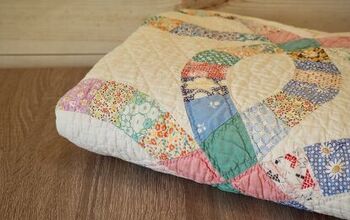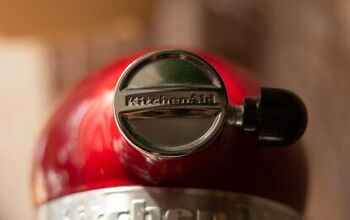Why Are Stair Treads So Expensive? (Find Out Now!)

Stair treads are one of the main components of a lovely and functional staircase or stairway. It simply isn’t possible to have a beautiful stairway without high-quality stair treads. Unfortunately, like most excellent things in life, stair treads come at a steep cost that many think is unjustified. So, why exactly are stair treads so expensive?
Stair treads are expensive because of the material they’re made of and the cost it takes to make them. Stair treads require a great deal of finesse and training to make, which results in stair tread makers charging a hefty sum for their craft. Stair treads are also made out of high-priced material such as wood or vinyl, which adds to its high price.
Whether you think that stair treads are too expensive or not doesn’t matter because people are willing to pay for what they need, stair treads add an element of class and beauty to stairways, and people are willing to pay top dollar for that. If you’re curious about what stair treads cost, why they’re so expensive, and the different kinds of treads, you’ve come to the right place.
Why are Stair Treads so Expensive?
Stair treads are considerably expensive because of what they’re made from, and the time it takes to make them. Here are some of the main reasons stair treads can be pretty pricey and why there are different prices for different treads.
The Material Cost
The biggest factor that determines the price of a stair tread is what it’s made out of. Exposed, hardwood stair treads are the most expensive treads on the market. That is because quality woods such as oak, hickory, maple, and walnut are beautiful in their natural state. They’re also expensive to cultivate and produce, which drives up the material cost.
Other stair tread materials such as vinyl and carpet cost slightly less because they’re easier to install and not as expensive to produce. Their overall aesthetics aren’t as pleasing as the hardwood look that many people like to see.
The Installation Cost
Installing stair treads is timely and challenging work. I’ve been on construction sites before where experienced carpenters take a full day or two to install 14 stair treads. They must be cut to the exact dimensions, and it often takes anywhere from three to five tries to get it just right. If you install the treads yourself, you’ll save money, whereas a carpenter will charge anywhere from $50 to $100 per hour.
The Decor Factor
Stair treads are valued for more than just convenience and functionality. They’re often designed to be beautiful and almost decorative. Having custom-made stair treads to your exact specifications will definitely run up the cost of your treads.
What are Stair Treads?
As the name entails, stair treads are the portion of the stairs that you step or tread on as you’re going up and down them. They are the flat piece of wood, carpet, or vinyl that form the base of every step you take. Stair risers, on the other hand, are the vertical pieces that connect perpendicularly to the treads. You can’t have a stairway without either one of these components.
Are Wood Stair Treads Expensive?
Wood stair treads are the most expensive of all stair treads and the most commonly used. Oak, hickory, maple, poplar, and many other types of wood are used for stair treads and risers. Different types of wood will cost different amounts, and which one you choose will greatly affect the total cost of your project.
You can expect to pay an average of right around $40 per stair tread on your staircase. The cheapest cost per tread is usually around $20, and the steep end is upwards of $150. The cost of your tread is determined by the quality of the wood, its thickness, and its durability. In general, the thicker the tread is, the sturdier it will be and the longer it will last.
Pros
- Most durable and longest lasting.
If you want to install a stairway with treads that will last a lifetime, hardwood is your best option. The harder the wood is and the higher the quality, the more durable and longer it will last. However, if money is more of a concern than longevity and quality, then hardwood stair treads might not be for you.
- Most beautiful.
As far as pure looks are concerned, hardwood stairs are often considered the best. You can choose different stains and paint colors to match the rest of your home. Your options are seemingly endless when you go with hardwood stairs, and you can even change the color if you get tired of one.
- Many options with different types of wood.
Hardwood doesn’t always have to be expensive for stair treads. If you’re willing to shop for deals and go down slightly in quality, you can find decent treads for $20 per tread. If you have 14 stairs, that comes out to a total of $280 for all your treads. Not bad when you compare that to $1800 for high-quality red oak stair treads.
Cons
- Most expensive to install and maintain.
Hardwood stair treads are beautiful, but that beauty comes at the cost of work and money. Stair treads should be re-stained every 2-5 years or as needed, and it can cost anywhere from $400 to $1000 to re-stain your stairway.
- It can be slippery and dangerous.
Wooden stairways are also notorious for how slippery they are. If you are prone to tripping, slipping, or have small children, hardwood stairways are a liability and downright dangerous. They’re also extremely hard and can cause a concussion or broken bone if you fall on them.
- Special care and handling are required for cleaning.
Cleaning your hardwood stairs should also be done with the use of a special cleaner. While other types of stairways only need to be vacuumed or mopped, wooden stairways should be hand scrubbed with an approved hardwood polisher.
Are Carpet Stair Treads Expensive?
The amount of money you pay for carpeted stair treads is completely dependent on the type of carpet and how much carpet you use. Some people like to have an entire stairway carpeted, while others only want the tread or part of the tread to be carpeted. Remember that carpet goes on top of the wood on a stair tread, but if the entire tread is being covered, the wood used as the base is often cheap and unrefined.
To have your stairway and treads carpeted, you can expect to pay anywhere between $500 and $1100. The reason is that the carpet is expensive and takes time to install. A skilled carpet layer can take up to a day to install carpet on a stairway. Also, you’re still paying anywhere from $5 to $20 for the wood tread that’s underneath the carpet, and it takes time to install those as well.
Pros
- Safe and Soft
Carpet steps are a great option if you’re concerned about safety. They’re nearly impossible to slip on, and the padding they provide makes for a softer landing spot than hardwood.
- Great for homes with kids and older people.
Carpet stair treads are a safer and better option in houses with small children or senior citizens than hardwood.
Cons
- Expensive and difficult to install.
Carpet can be just as expensive if not more expensive than hardwood stair treads. They’re also difficult to install and require the workmanship of a professional.
- Difficult to maintain and replace.
Depending on the type of carpet that you choose, they can stain easily and are difficult to clean. It’s also expensive to replace carpet if you ever want to do so.
What About Vinyl Stair Treads?
Vinyl stair treads are quickly becoming the stair tread of choice in many homes and businesses. Its popularity is mainly because it’s considerably cheaper than hardwood, and it’s also easy to maintain and install. As with carpet stair treads, vinyl treads have a wood base underneath them, but it’s unrefined and cheap. The wood underneath a vinyl or carpet stair tread is usually thick plywood or scrap wood of some sort.
Pros
- The cheapest option for stair treads.
In terms of cost, vinyl stair treads are the cheapest option. The cost of the wood underneath and the tread itself can be anywhere from $15 to $50 but usually won’t go much higher than that. Vinyl is also a good option for remodeling when all you really want to do is cover an old, nasty stairway.
- Easiest to maintain and clean.
Vinyl stair treads are easy to clean and maintain as all you need to do is sweep them and mop them as needed. They don’t require any special cleaners or methods.
- Slip-resistant.
Vinyl can be slightly slippery at times but not nearly as slippery as hardwood.
- Aesthetically pleasing.
Vinyl might not look as good as carpet, but it’s by no means an ugly option for your stair treads. Many types of vinyl treads can be purchased to look very similar to hardwood or tile.
Cons
- Not as durable as hardwood.
Vinyl treads are prone to chipping and cracking with heavy use or abuse. You’ll likely have to replace them more often than carpet or hardwood treads.
- Don’t look as good as carpet or hardwood.
Like I said before, vinyl is by no means ugly. It simply isn’t as beautiful as carpet or hardwood.
Related Questions
Do stair treads and risers need to be the same color and material?
You can optionally use different materials and colors for treads and risers. As long as the color scheme works, different colors are a good way to spice things up and add character.
Can I install stair treads myself?
If you have sufficient experience with the material your treads are made of, there’s no reason that you can’t install them yourself. Remember to be patient and take your time, however, as treads can be trying at times.
Final Thoughts
Stair treads are a great way to add character and beauty to your home. It’s important, however, to choose the right kind of tread for your purposes. If you want the highest-quality tread that money can buy, and you can afford it, then hardwood treads are the way to go. If, however, you want to save money or have safety concerns, a different tread might be a better option.

Before I started writing, I worked for 6 plus years in the plumbing, electrical, and HVAC business. I was primarily an HVAC installer but also worked as a plumber and electrician. Now I'm a copywriter, focusing on home improvement content and guides.
More by Jalin Coblentz



























